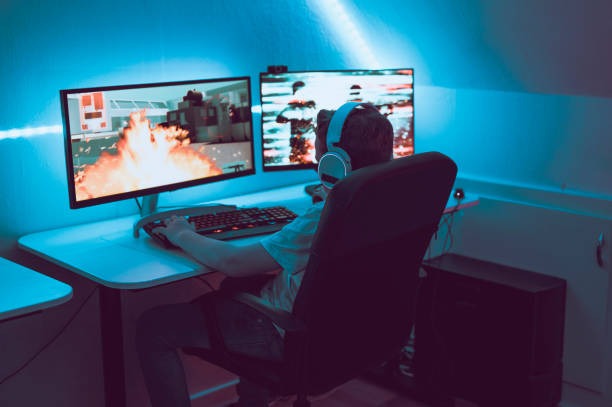In the ever-evolving landscape of technology, virtual worlds have become a significant part of our daily lives, subtly yet profoundly influencing how we perceive reality. As digital environments grow increasingly immersive and sophisticated, their impact on human perception raises intriguing questions about the nature of reality itself.
Virtual worlds offer experiences that can be both fantastical and eerily realistic. From video games to virtual reality (VR) simulations, these digital realms provide users with an opportunity to explore scenarios beyond the constraints of physical existence. In doing so, they challenge our traditional notions of space, time, and identity. The boundaries between what is real and what is simulated blur as individuals navigate these complex landscapes.
One key aspect of this phenomenon is the concept of presence—the feeling of being “there” in a virtual environment. Advances in technology have made it possible for VR systems to create highly convincing sensory experiences that trick the brain into perceiving digital spaces as genuine environments. This sense of presence can alter an individual’s emotional responses and cognitive processes, leading them to react to virtual stimuli as if they were real.
Moreover, virtual worlds often serve as platforms for social interaction and community building. Online multiplayer games and social VR best crypto casino spaces enable people from diverse backgrounds to connect and collaborate in ways previously unimaginable. These interactions can shape perceptions by exposing users to different cultures, ideas, and perspectives within a shared digital context.
However, there are also concerns about how prolonged exposure to virtual environments might distort one’s perception of reality. Immersion in these worlds can lead some individuals to prefer their digital personas over their real-world identities or develop dependencies that affect their daily functioning outside the screen. The potential for addiction highlights the need for balance between engaging with virtual spaces and maintaining connections with tangible realities.
Furthermore, designers play a crucial role in shaping perceptions through their creation choices within these environments. By crafting narratives or settings that emphasize particular themes or ideologies—whether consciously or subconsciously—they influence how users interpret various aspects of life both inside and outside cyberspace.
As we continue integrating more seamlessly into technologically mediated existences via augmented realities (AR), artificial intelligence (AI), mixed realities (MR), etc., understanding this interplay becomes imperative—not just academically but ethically too—to ensure positive outcomes while mitigating negative consequences associated with altered perceptions due largely because technological advancements outpace societal readiness sometimes leaving us grappling unpreparedly at intersections where man meets machine-mediated interpretations anew again each day forward henceforth seemingly infinitely onward without end seemingly insightfully enough still somehow miraculously though perplexingly nonetheless undeniably inevitably indeed ultimately truly perhaps paradoxically so maybe even serendipitously after all quite possibly surprisingly delightfully ironically unexpectedly wondrously marvelously fascinatingly enthrallingly captivatingly mesmerizingly astonishingly breathtakingly inspiringly astoundingly incredibly unbelievably fantastically extraordinarily remarkably stunning spectacular awesome amazing mind-blowing eye-opening jaw-dropping awe-inspiring thought-provoking heartwarming soul-stirring life-changing world-shaping experience!

